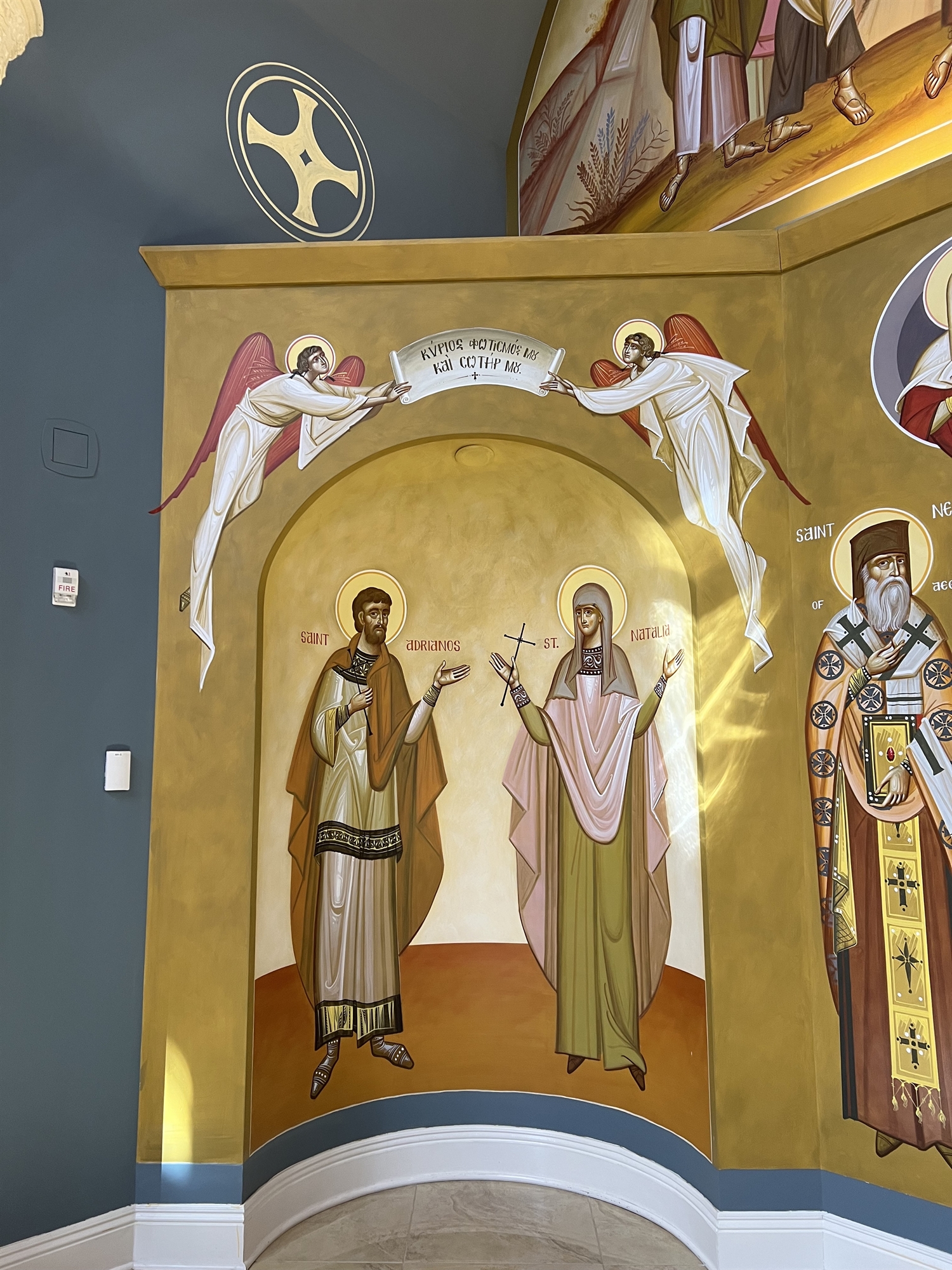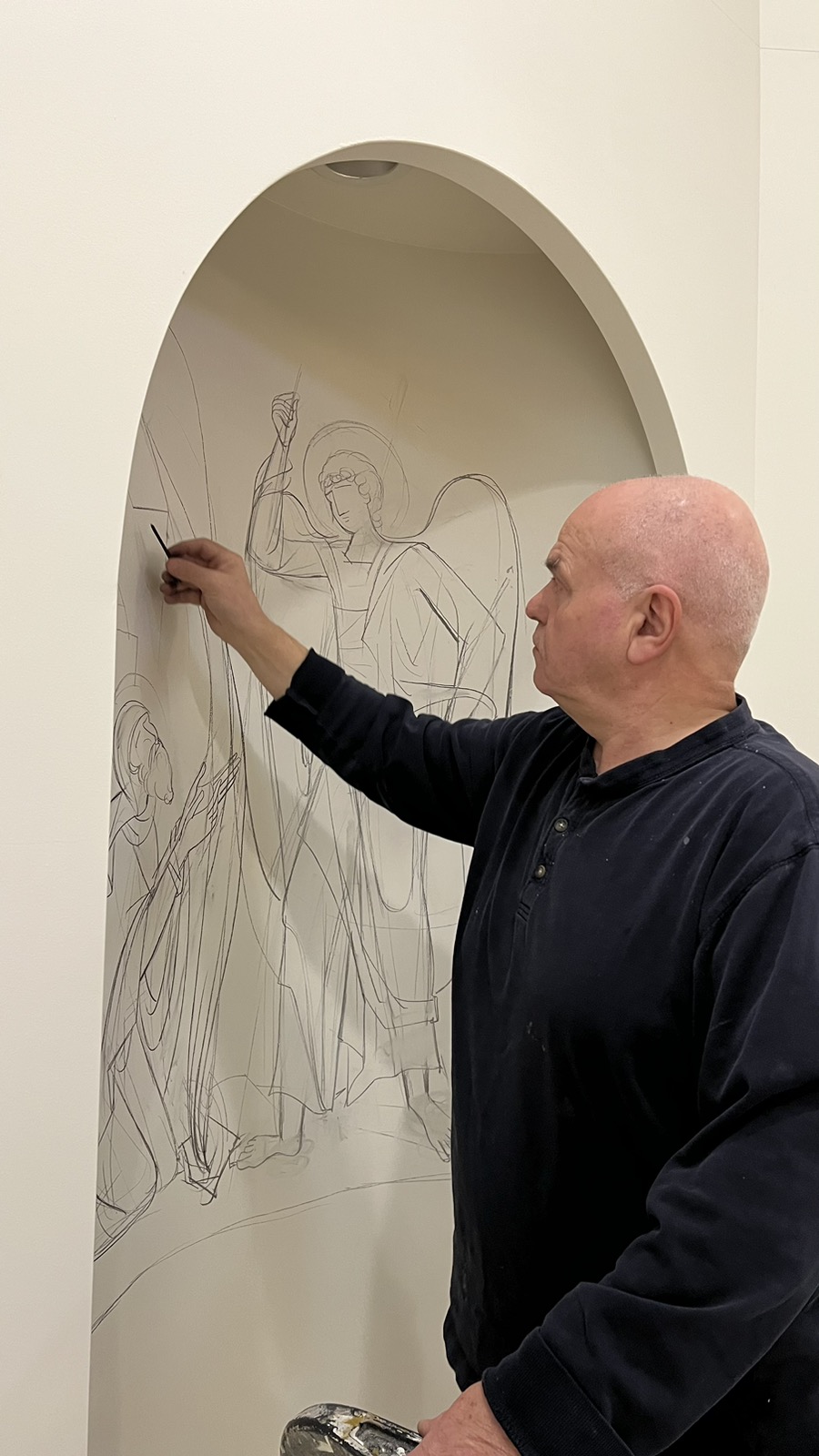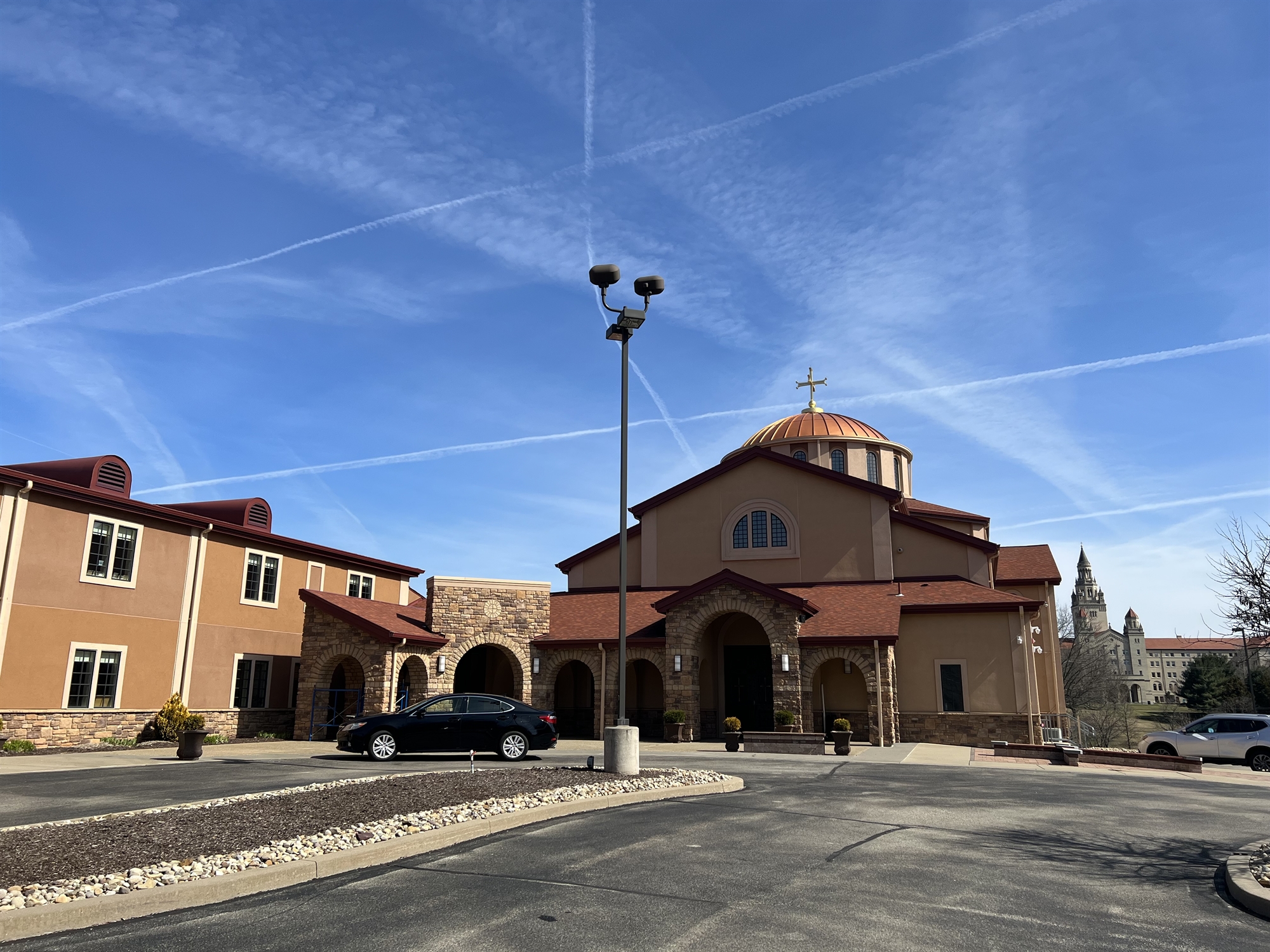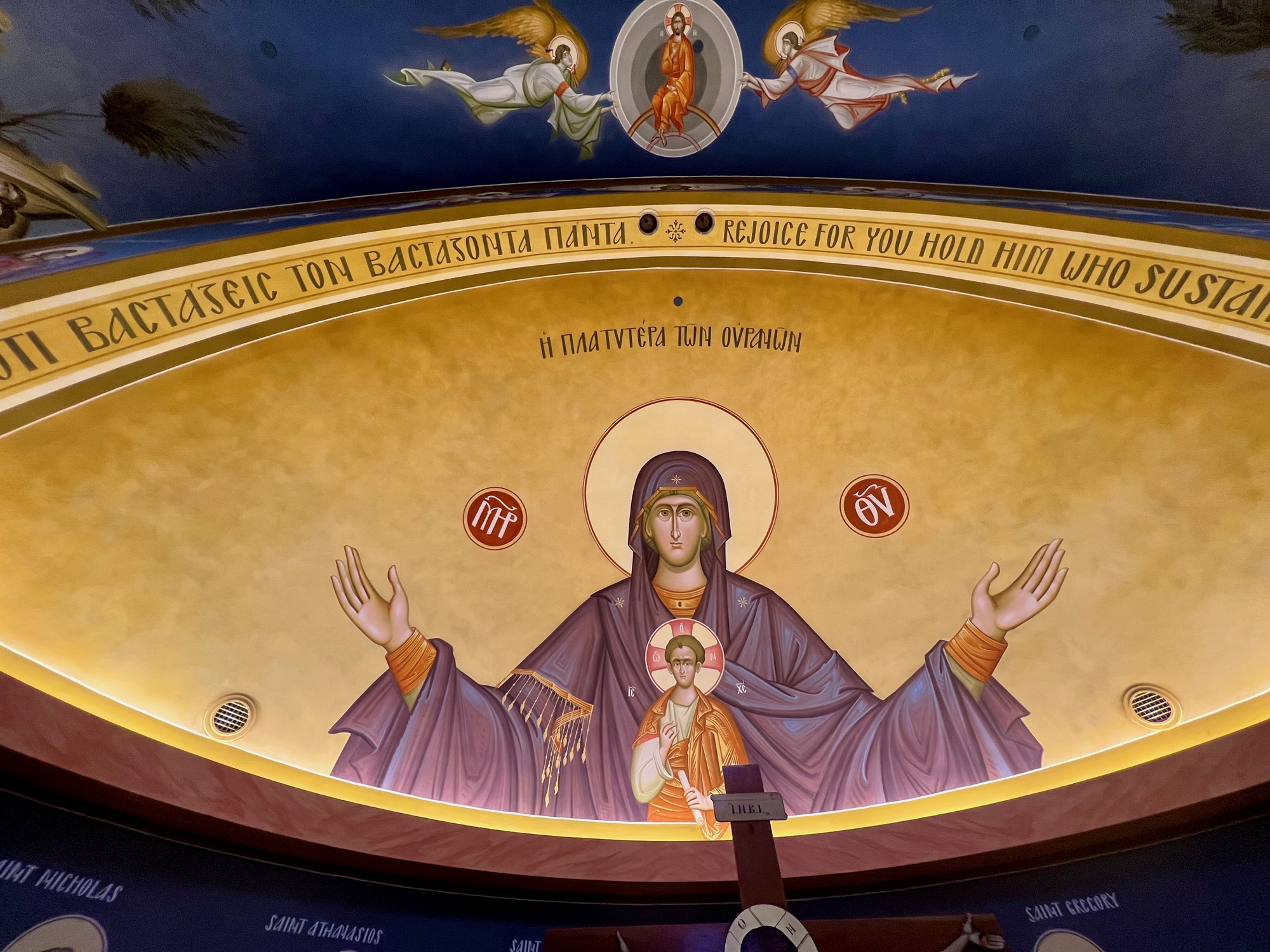
In the United States of America, the orthodox tradition of homogeneity is called upon to enter into a dialogue with modern development. The completion of the iconography in the surrounding Pittsburgh Trinity Church is a complex project of multifaceted importance, with artistic, technical, philosophical, and even geopolitical dimensions.
The hagiographies, the work of Giorgos Kordis and his collaborators-artists (Kanellos Kanellopoulos, Polychronis Vichos, Alkiviadis Pappas, Maria Panou), were created on site using the possibilities of natural light: an act of reconciliation, says Giorgos Kordis, “of painting with architecture and painting ” light” with natural light”. The result represents, gives rise to thoughts about the present and future of icon painting.

The Ark of the project is the Holy Trinity, the work of the architect Chris Kamajes (Christos Hamatsis), a temple of harmony and wisdom based on early Christian examples (such as the temple of Sergius and Bacchus in Constantinople in the 6th century, according to George Kordis). This is a temple that attracts natural light and creates a sense of a single space without partitions. It is interesting that a modern Orthodox church building in the United States demonstrates a more reflective mood than the corresponding one in Greece. However, the design of the iconography by Yorgos Qordis is also a reflection of the freedom that can flourish in such conditions.
Giorgos Kordis, a spiritual creator and teacher, has in recent years created the “Metz Art Center” in Athens for exhibitions, classes and lectures. Life is central to his worldview, and he maintains an open and fruitful dialogue with other hagiographers, not only Greek, but also from other Orthodox countries or artists from third countries who converted to Orthodoxy. The new projects that he is implementing in the US also reflect the mobility that exists in the diaspora and in church communities in the spirit of the Archbishop of America, Mr. Elpidophoros, and all bishops. In Agia Triada, George Kordis and his colleagues were invited by the community and the most respected Bishop of Pittsburgh, Mr. Savva.

Lots of features
“The Greek community, traditionally Orthodox, has been expanding in recent decades due to the influx of non-Orthodox Christians who accept the Orthodox faith and are faced with the task of continuing its course without losing their national identity and without losing the ability to assimilate into its body. the richness of cultural features, the “fernies” brought by its new believers,” says Yorgos Kordis. The churches cultivate a style of culture “unifying and at the same time modern, which does not abandon its traditional elements, but is combined with the currents of modern Western culture.”


It is significant that a new generation of architects creates new temples. “These are architects with great artistic ability,” says Yorgos Kordis. “They create beautiful churches that do not just copy the past, but open new paths in the vision of the Orthodox community. One of them is Chris Kamajes (Christos Hamatsis), a Greek by birth, with whom we often collaborated on a project of historicization – the iconography of churches in the United States. The Holy Trinity was offered a “canvas of enormous dimensions”, the architect’s proposal to the hagiographers. Thus, the icon painting project develops not in parts, but in the logic of a visual installation. The necessary subzones were invented by painters who were not provided for by architecture.
A special parameter of the iconography of the Holy Trinity in Pittsburgh were not only colors (four-color color palette of Polygnosia: white, black, ocher, crimson) and a “delicate color effect”, but also the choice of some rare iconographic subjects: The Jews crossing the Red Sea in connection with the Baptism of Christ , the Resurrection of the daughter of Jairus and the Resurrection of the son of the widow of Nain in connection with the Assumption of the Virgin. “Hagiography was and remains a team project,” says Giorgos Kordis. The result gives food for thought.
Source: Kathimerini
Ashley Bailey is a talented author and journalist known for her writing on trending topics. Currently working at 247 news reel, she brings readers fresh perspectives on current issues. With her well-researched and thought-provoking articles, she captures the zeitgeist and stays ahead of the latest trends. Ashley’s writing is a must-read for anyone interested in staying up-to-date with the latest developments.